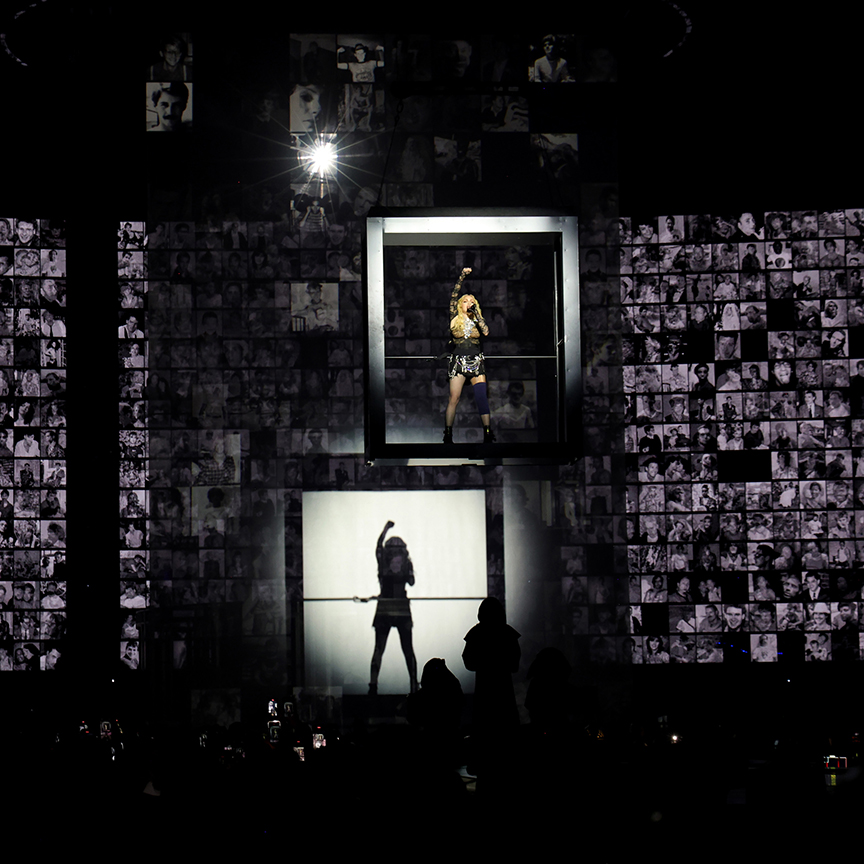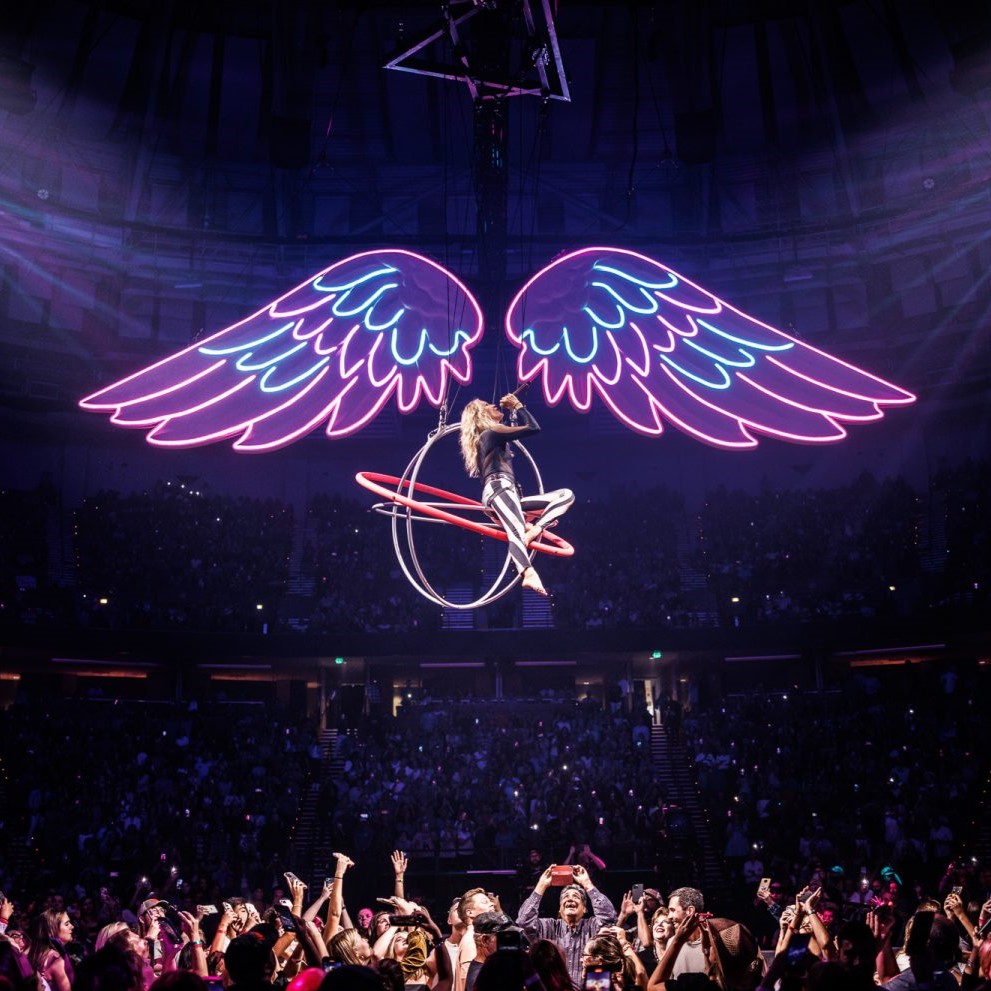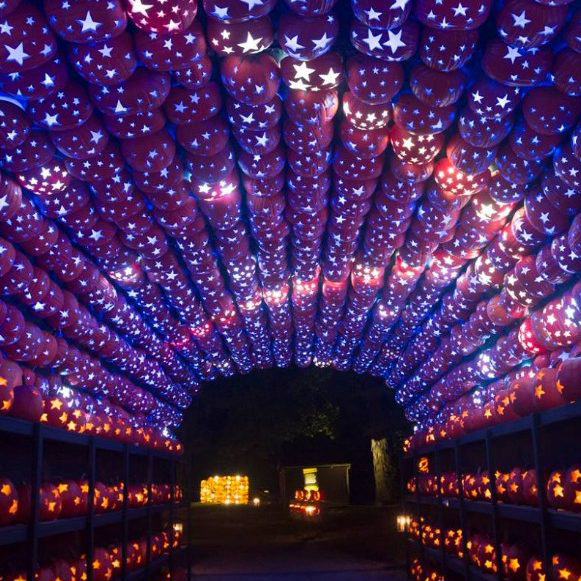QolorTOPIX Light Conversation with Scenic Electrics Engineer Jay Woods
Hello! Welcome to Episode 4 of the QolorTOPIX Light Conversations podcast series.
Published in March 2024, our fourth episode features Jay Woods, who is a New York-based Scenic Electrics Engineer.
Mr. Woods is a 25-year lighting industry veteran with experience on a variety of entertainment projects, including Broadway, touring projects, dance, television, and more. Jay Woods is from Gardiner, New York, and is a graduate of the State University of New York at Purchase. In this QolorTOPIX conversation, Jay discusses his career, his approach to technology and collaboration, and vision for the future of lighting.
This episode was hosted by Jackie Morreale from the City Theatrical Marketing Team.
Other QolorTOPIX episodes include:
LISTEN NOW!
"There are many people that I've been blessed with in my career to have the ability to work with. I feel like I've met and worked with some of the greatest people in the entertainment community doing this job. For that, I am super thankful."
- Jay Woods, QolorTOPIX Episode 4, 15:20
PODCAST TRANSCRIPT:
00:38 - Jackie Morreale of City Theatrical: Hello and welcome to the QolorTOPIX podcast series! My name is Jackie Morreale, from the City Theatrical Marketing Team. Today I am joined by Jay Woods, who is a scenic electrics engineer and 25 year lighting industry veteran. Jay Woods is from Gardner, New York and is a graduate of the State University of New York. At purchase Jays works span. Scenic. Electric engineering for a variety of entertainment projects including Broadway shows, touring projects, dance television, and more.
Jay, to kick off our conversation, are you working on any projects that we can go and check out soon?
Jay Woods: Hi, Jackie. Thank you so much for having me today. Things that are still on my desk working their way into the theater right now are, The Heart of Rock and Roll for Broadway, and the revitalization of Cabaret. Both are going to be super exciting shows, I can't wait.
01:30 - City Theatrical: We are so excited to see those shows! Thank you so much for sharing.
Tell us a little bit more about your role as a scenic electrics engineer and the processes involved with scenic electrics engineering.
Jay Woods: For me, scenic electric engineering is about taking the design intent of the lighting that's built into a scene and combining that with the technical knowledge needed to realize it. I think that it's a part of the process that sometimes falls into this gray space between the scenic and the lighting departments. I like to approach the role as the bridge that brings together the design team and the production staff and the scenic fabricator, and then integrates all of their contributions with the engineering of the systems and the technology. To me, that's the most interesting part to be involved with.
02:31 - City Theatrical: Can you walk us through the typical scenic electrics process for our Broadway show?
Jay Woods: They're definitely not all the same, but usually my first point of contact is with the scenic fabricator, at the scenic shop, who's going to build the scenery. Sometimes, we work together on the bidding process and the initial discovery of what the show needs, review the design plans and the scenic electric specifications, and start to make a plan for how to approach the show in rough strokes.
Then once that bid is awarded, I usually reach out to the production electrician for some initial conversations, and we'll talk about equipment choices and how you know power and data will be routed in the theater and other unique needs for that particular show. Shows often have set electric-specific things, like what sort of connector we are using on all our power supplies for this show and who likes to use what kind of equipment.
We get all that figured out and then it's usually on to meetings with the scenic shop or the fabricators, project management, and the head of their electrics department, who are going to be building this. That's where we start to go through all the scenic elements one by one. I look at everything in a lot of detail. Then we start talking about specific equipment and fabrication techniques and things that are really going to shape up how the show is going to come together.
Then we'll take that information, and the shop takes some time and works from the designer’s plans to turn those plans into a 3D model of the scenic unit. When that's complete, I will take that 3D model and begin the technical drawing and modeling process. I like to think of my drawing set as a communication tool, as it helps to bring together the intent of the design staff and the technical detail that the fabricators need to successfully install the electrics. I'll take that model and add in the various electric components, things like lighting sources and dimming control. Then I'll start integrating wiring and figuring out wire pathways.
One of the most interesting things about the job is that Broadway scenery is often comprised of multiple design layers. There are curves and sweeps and dimensionality and a lot of detail. All of that needs to be built in sections that will fit into a trailer, because it has to get from the shop into the theater. That means there can't all be one piece – it needs to be broken up and transported.
There's a lot of thought that goes into things, like: where do we need to have connectors? Where can the wire pathways be? Where can they not be? All those details, that's the real nitty gritty of thinking through it.
After that, there's modeling the control boards and the various components that go on there and figuring out how they fit into the scenery, and a host of other details, like pixel schedules and dimmer schedules. All that gets encompassed into a drawing set, which I will send back out to be reviewed by production, electricians and design staff, and the scenic fabricator. All the stakeholders that are involved look at it and evaluate how it will work for the production.
06:57 - City Theatrical: You went a little bit into the technology behind the process with talking about 3D modeling and planning ahead, creating modular scenic elements.
How does technology help you, and perhaps others in a similar scenic electrical engineering role, to achieve the overall design intent for the show?
Jay Woods: Designers have always been in favor of better control over their lighting in terms of both quality of the control, and quantity of the control. Both are valued in design. The trick is, Broadway scenery is usually packed really tight into the theater. You must think about space and accessibility as big considerations. That's where technology can often step in.
The technology is able to provide really high-resolution control over lighting sources, like LED tape and the sources that we see all the time. That control is engineered to fit and to work in the confines of a piece of scenery. You're lucky if it just stays on stage, but chances are, it flies in or it tracks or it comes up and out of the deck, or something automated. This happens with it, and so all these things need to be built in a way that they can facilitate it. What the design intent has, in terms of motion of the scenery piece, is also enabled by technology. So, technology helps a lot with things like that.
Wireless data is also huge. Things like Multiverse wireless DMX are a giant advantage for us. With it, we can disconnect the data wire from the unit, and because we use so many LED sources when we need a truly moving, tracking, flying unit, we can power that off of a battery and use a product like Multiverse and really have that be completely unwired. It is technology that's really making it possible, whereas before it would have trailed the cord that would have been ugly and a showstopper. So that's huge.
And then there’s LED tape and LED Neon, and pixel tape, and lots of progress on all this stuff. It is all rapidly evolving technology. It’s interesting to watch the constant foot race of how much brighter, how much smaller, how much more control, how much smoother, it can all be. It's been great, just in the past couple of years, seeing how technology has really caught up to the requests and the needs and the wish lists of the designers and the people who work with this stuff. It's great.
10:17 - City Theatrical: Thank you so much for the shout outs to some of our products by the way, Multiverse wireless DMX and QolorFLEX LED Tape and NuNeon, we really appreciate it.
Let's talk a little bit more about the collaboration process. Can you please describe the collaborative process between design, production, fabrication and engineering?
Jay Woods: All of those stakeholders need to be represented in the process of building the show. The design department has a vision that they need to achieve right. The fabricators have physical constraints and budgets that must be adhered to. The production electricians and carpenters need to be able to get the show loaded into the theater on schedule. All of those are critical for everyone.
As the engineer, there are things you can do and things that I always try to do to help facilitate that process. They involve listening to and understanding the needs of design, working closely with the fabricator, and then just communicating and talking through the technical plan.
With electricians and carpenters, and all the production staff who's involved in it, they want to make sure it all goes as smoothly as possible.
I work hand in hand, day by day, with the scenic fabricator and their people. We're actually building this stuff, on the phone or on video meetings, or at the shop when I need to be to, to make sure that everything is integrated as well as it can be.
The collaborative process is really the designer’s intent, making it to the stage. When it gets there, it worked. That's really the dream.
The thing that is the biggest challenge is there are so many steps from beginning to end to make that happen. When it all comes together and it loads into the theater, and you get the phone call that the electrician plugged it in, and it worked… That's the best day ever.
12:44 - City Theatrical: Living the dream, right? It all comes together and works.
How does the system that you're describing – this collaborative process – and the design system, differ on a Broadway show versus a touring show?
Jay Woods: A Broadway show is usually designed to load in once they're going to stay in the theater that they're in. Often, the tours are from Broadway shows, so sometimes the crews have the advantage of working on the Broadway show and then also working on the tour later.
The tour is different because the tour is going to be in a different place every, every day, every week. It depends on the schedule, but the equipment and the system design need to really be thought of in a way that is mobile, and robust enough to be loaded in and out of a truck.
Scenery for tours will likely need some form of repair on the road. You must think like this: If this breaks, how can this be repaired? What happens when the forklift runs over this connector? Is it easier to put this on backstage than it is to put something else up? Things like that are all important.
Then there’s speed. Time is money for everyone – whether you're on Broadway or you're on a Broadway tour. You're loading in the Broadway show once, but you're loading in the tour dozens and dozens of times, so your cost is magnified. A little extra effort, a little extra thought put into how we can make these pieces go together more quickly is something that will pay off.
How do we make these pieces go together quickly, when a different person is putting them together, every time they get put together? Often, it's a local crew, so while you will have your touring crew, there are often local hands coming in, and it needs to make sense to them too. They've never seen it before, and things being arranged in a way that it's simple and easy and intuitive to put it together and plug it in. That gives you a better chance of success the first time and less chance that things are going to get improperly managed on the road later.
15:20 - City Theatrical: It sounds like it's all about teamwork. I'm sure that you've made some really great relationships with folks in the industry along the way, whether on Broadway, touring or other shows and installations.
Would you like to give any quick shout outs to colleagues who have helped make it all possible?
Jay Woods: Absolutely. There are many people that I've been blessed with in my career to have the ability to work with. I feel like I've met and worked with some of the greatest people in the entertainment community doing this job. For that, I am super thankful.
I couldn't start anywhere other than by thanking David Grill. When I was in college, he saw enough potential in me to let me out into this world. Since then, he has been a mentor and a friend and colleague. I appreciate everything that he's ever done for me and helped me with.
Beyond that, it's a long list. There are so many hardworking people at scenic shops across this country that I get to talk to and work with. They are just dedicated professionals, and they do a job that's difficult. With scenic electrics, I like to say, we do it fast because we get it last. Everything about the scenery is built and painted and done. Usually when scenic electrics get it, the next thing that needs to happen is it's got to get on the truck. If there have been delays, which happens, since we live in a real world, and deadlines don't always want to shift, then the last person gets it and has to work the fastest. So those guys just work their tails off. There are so many of them and I'm thankful that they're there.
Then there are the project managers who are the hidden heroes that this industry runs on. They keep all the balls in the air and facilitate communication between client and shop and me and everybody who needs to be kept in the know. They work super long hours, and their jobs are stressful. No one could do it without them.
There are just legions of technical designers who are drawing 3D models for individual scenery. Some of their contributions are what the piece really becomes, and the way that electricity gets integrated into it are massive. When you can have a good working relationship with a technical designer, just drawing a piece of scenery, especially one that's complicated, is as good as gold.
Finally, thank you to the production electricians and the production carpenters. These are what I like to call the phone call people. I love to get on the phone with them. You can solve problems right away. Usually, when the phone rings, you have a problem you have to solve right away. They're all just such great people. You don't make it to Broadway as a professional electrician, one, if you don't have a sense of humor, and two, if you're not really good at your job. It's always a pleasure to work with people who are very good at what they do. You know you can't go wrong there.
19:02 - City Theatrical: The next part of our interview is called ‘Quick Fire Questions’. This is to get to know you a little bit better outside of the lighting industry.
Jay Woods, pizza or sushi? Go.
Jay Woods: Sushi.
City Theatrical: Nice. LED or incandescent lighting?
Jay Woods: Incandescent, even if you try to take it away.
City Theatrical: Interesting. Drama or musical?
Jay Woods: Drama.
City Theatrical: Even more interesting. Tour or TV?
Jay Woods: TV.
City Theatrical: OK. Cat or dog?
Jay Woods: Dog, got to be dog.
19:42 - City Theatrical: Thank you so much for taking the time to meet with us today and share your insights, Jay.
Jay Woods: I would just like. To say I want to express my complete gratitude for the opportunities that have been presented to me and have been a part of what I call my career. Thanks for the chance to share some of that I know with your audience today.
City Theatrical: Thank you for joining us and we hope to speak to you again soon.
Jay Woods: Thank you.
To learn more about Jay Woods, visit his website: https://www.jaywoodsdesign.com/
Read more about Jay Woods and his Recent Projects
2019 City Theatrical Designer Interview: Jay Woods
City Theatrical interviewed Jay Woods, New York-based lighting designer in September 2019 to find out more about his career and future plans.
Read interview
2024 Case Study: Multiverse at the Madonna Celebration Tour
City Theatrical held a case study Q&A with Jay Woods to discuss how Multiverse wireless DMX/RDM is being used on Madonna's Celebration tour.
Read case study
2022 Case Study: QolorFLEX on Tour with Carrie Underwood
City Theatrical held a case study Q&A with Jay Woods in October 2022 to discuss how QolorFLEX NuNeon was used for the scenic elements in Carrie Underwood's "The Denim & Rhinestones Tour".
Read case study
2019 Case Study: Multiverse at the Great Jack O’Lantern Blaze
City Theatrical held a case study Q&A with Jay Woods to discuss how Multiverse Transmitter, Multiverse SHoW Baby, and DMXcat were used at the Great Jack O’ Lantern Blaze in Croton-on-Hudson, New York.
Read case study
Explore the City Theatrical QolorTOPIX Podcast Series
Listen to this and other light conversations on our podcast page or wherever you get podcasts.
Listen Now
